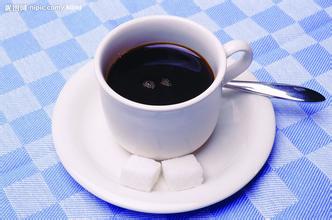Introduction to the treatment methods of Grinding degree and Baking degree for describing the Flavor of Indonesian Manning Coffee
Every Indonesian knows Aceh Gayo Coffee, which grows in the Gayo highlands of central Aceh in northeastern Sumatra. Apart from the fact that it jokingly says "Gayo", it is also one of the best-selling coffee in the country. Although Arabica and Robusta beans are also made into Gayo coffee, Arabica Gayo coffee is the most commonly consumed and exported. Gayo Arabica coffee tastes strong and complex. Its strong aroma and mild bitterness make it the best coffee lores Flores is known for its unparalleled beauty and is the home of the Hobbit ancestors in the world. Who would have thought that this amazing region also produces some of the best coffee beans in the world? Flores Flores is the larger island from Bali to East Timor from west to east. Bajawa is a port town in the southern coastal plateau and a place where coffee is grown. The process of growing Arabica coffee is a traditional method that continues from generation to generation. The taste of this coffee is characterized by the strong aroma of flowers, chocolate, soil and sometimes moist tobacco. Using the wet shelling process, leaving a relatively thick pulp, that unique fragrant flavor can only be found in this area.
In 1696, the then Governor of the Netherlands in Malabar, India, gave a batch of coffee seedlings to the Governor of the Netherlands in batavia in Batavia (present-day Jarkata in Jakarta). This was the first time that coffee was grown in Indonesia. However, the first batch of coffee seedlings were washed away by the flood. In 1699, Batavia accepted the gift again. This time, the coffee seedlings survived successfully and ushered in the first harvest in 1701, which began the coffee trip to Indonesia.
At first, coffee was grown in and around Jakarta, and then gradually expanded to central and eastern Java, as well as Sulawesi, Sumatra and Bali. At the same time, in eastern Indonesia, coffee was also grown in Flores on the island of Flores and Timor on the island of Timor in the Portuguese territory at that time, but the source of the coffee seedlings was different.
Indonesian coffee began to supply the European market in 1711, when Indonesia was the first country outside Africa and Arabia to grow coffee on a large scale. It became the world's largest exporter of coffee in the 1880s. The fame of Java coffee began here.
The prosperity of coffee in Indonesia was not sustainable, coffee production was fatally hit at the end of the 18th century, and leaf rust, originally found in West Java, spread rapidly, destroying the Arabica coffee estate in Indonesia. The leading position of the coffee trade was replaced by the American producing countries. However, it is worth mentioning that the leaf rust disaster did not affect the eastern Indonesian producing areas, namely Flores Island and Timor, where the genes of some coffee trees in Timor today can be traced back to the 16th and 17th centuries.
According to ICO, Indonesia ranked third in coffee production in the world in 2013, although 80% of it was Robusta.
Kopi Luwak is a traditional specialty in some Indonesian islands, such as Java, Sumatra, Bali and Sulawesi. The civet only contains this unique coffee in its feces after eating local coffee cherries. In fact, the official name of Kopi Luwak is Kopi Luwak. Kopi means "coffee" in Indonesian, while Luwak is a wild civet in Indonesia.
Sheng Zhen, a staff member of the Indonesian Pavilion, said that in order to get precious "cat poop coffee beans," local farmers in Indonesia would put civets into cages to feed themselves, and some coffee merchants simply packed an island to keep these cats. Let them enjoy the natural environment of sunshine and rain. "the civets eat and pull by themselves, and you can't force them to eat or pull, so the coffee beans in the excrement are very precious!" It is reported that this rare coffee produces only 500 pounds a year. The ingredients of this kind of coffee are difficult to obtain.

Important Notice :
前街咖啡 FrontStreet Coffee has moved to new addredd:
FrontStreet Coffee Address: 315,Donghua East Road,GuangZhou
Tel:020 38364473
- Prev

Description of Panamanian Flavor Coffee Bean Flavor, introduction to the treatment of Grinding degree and Baking degree
Panama has been among the world's best coffee producers since three years ago, surprising countries that have been in the vanguard of developer production for many years. Panamanian coffee is mainly produced in the west near the Costa Rican border, producing the best washed coffee. Compared with coffee beans grown at low and middle elevations, the low temperature and stable climate in the high elevations of Panama
- Next

Introduction to the treatment methods of grinding degree and baking degree for flavor description of Jamaican Blue Mountain Coffee
The secret of why Blue Mountain coffee tastes pure: their coffee trees are all grown on rugged hillsides, and the picking process is so difficult that non-local skilled female workers are simply unable to do it. It is very important to choose the right ripe coffee beans when picking. Immaturity or ripeness will affect the quality of the coffee. The picked coffee beans are shelled on the same day, and then let them ferment for 1218 hours.
Related
- Detailed explanation of Jadeite planting Land in Panamanian Jadeite Manor introduction to the grading system of Jadeite competitive bidding, Red bid, Green bid and Rose Summer
- Story of Coffee planting in Brenka region of Costa Rica Stonehenge Manor anaerobic heavy honey treatment of flavor mouth
- What's on the barrel of Blue Mountain Coffee beans?
- Can American coffee also pull flowers? How to use hot American style to pull out a good-looking pattern?
- Can you make a cold extract with coffee beans? What is the right proportion for cold-extracted coffee formula?
- Indonesian PWN Gold Mandrine Coffee Origin Features Flavor How to Chong? Mandolin coffee is American.
- A brief introduction to the flavor characteristics of Brazilian yellow bourbon coffee beans
- What is the effect of different water quality on the flavor of cold-extracted coffee? What kind of water is best for brewing coffee?
- Why do you think of Rose Summer whenever you mention Panamanian coffee?
- Introduction to the characteristics of authentic blue mountain coffee bean producing areas? What is the CIB Coffee Authority in Jamaica?

